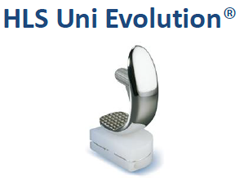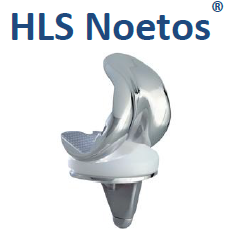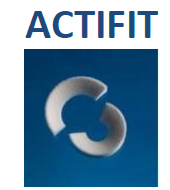Knee Surgery
 |
Unicompartmental knee implants Maximum preservation of bone stock by distal femoral resurfacing (mini-invasive). |
· Identical implant for medial or lateral compartments. |
 |
Posterior stabilized Total Knee Replacement
A deep trochlea groove to ensure stability of the extensor apparatus and improve patellar tracking. The patella may or may not be resurfaced.
|
Recognized clinical success: 20 years of research and Perfectly anatomic. The HLS system is the successful combination of an implant and its instrumentation
|
 |
|
|
